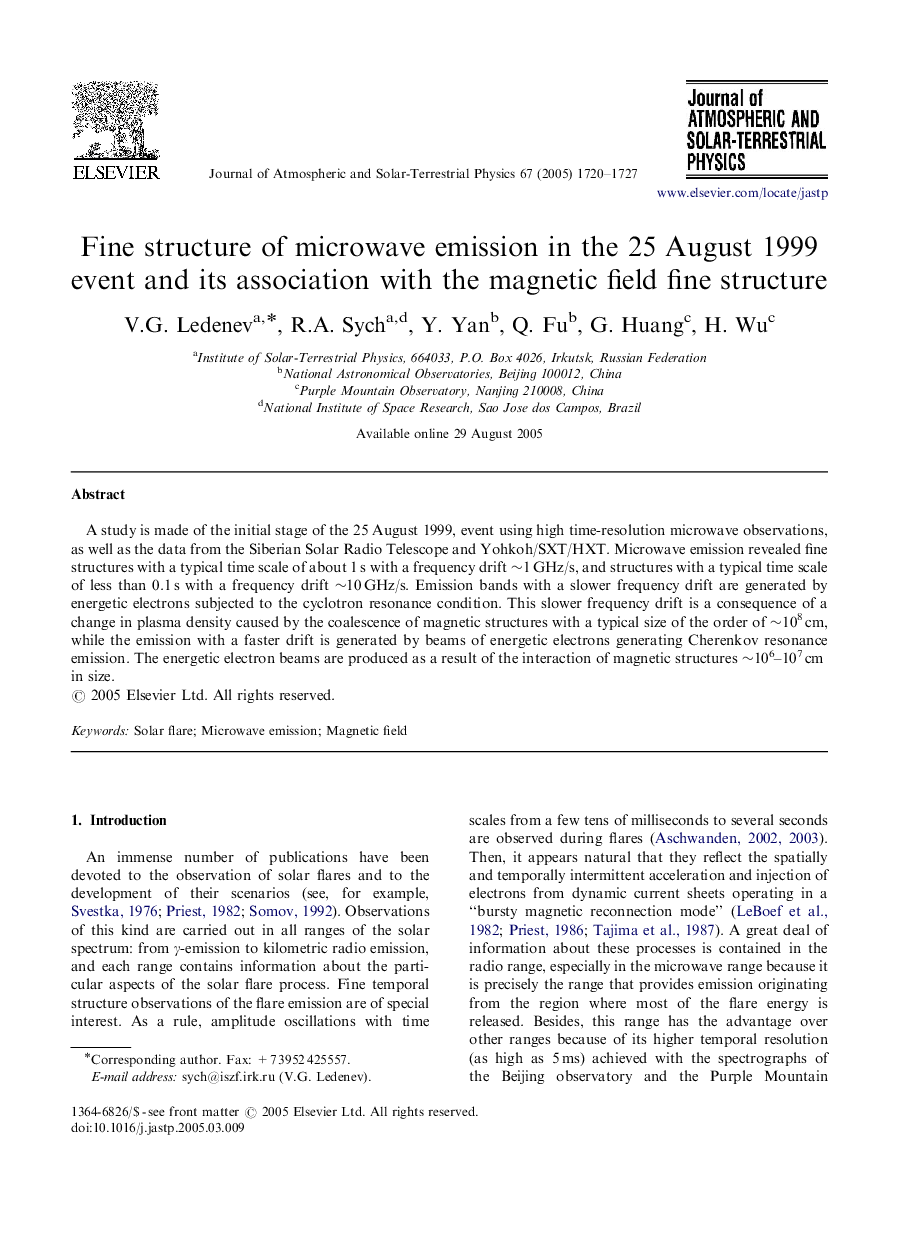| Article ID | Journal | Published Year | Pages | File Type |
|---|---|---|---|---|
| 9827674 | Journal of Atmospheric and Solar-Terrestrial Physics | 2005 | 8 Pages |
Abstract
A study is made of the initial stage of the 25 August 1999, event using high time-resolution microwave observations, as well as the data from the Siberian Solar Radio Telescope and Yohkoh/SXT/HXT. Microwave emission revealed fine structures with a typical time scale of about 1Â s with a frequency drift â¼1Â GHz/s, and structures with a typical time scale of less than 0.1Â s with a frequency drift â¼10Â GHz/s. Emission bands with a slower frequency drift are generated by energetic electrons subjected to the cyclotron resonance condition. This slower frequency drift is a consequence of a change in plasma density caused by the coalescence of magnetic structures with a typical size of the order of â¼108Â cm, while the emission with a faster drift is generated by beams of energetic electrons generating Cherenkov resonance emission. The energetic electron beams are produced as a result of the interaction of magnetic structures â¼106-107Â cm in size.
Related Topics
Physical Sciences and Engineering
Earth and Planetary Sciences
Geophysics
Authors
V.G. Ledenev, R.A. Sych, Y. Yan, Q. Fu, G. Huang, H. Wu,
